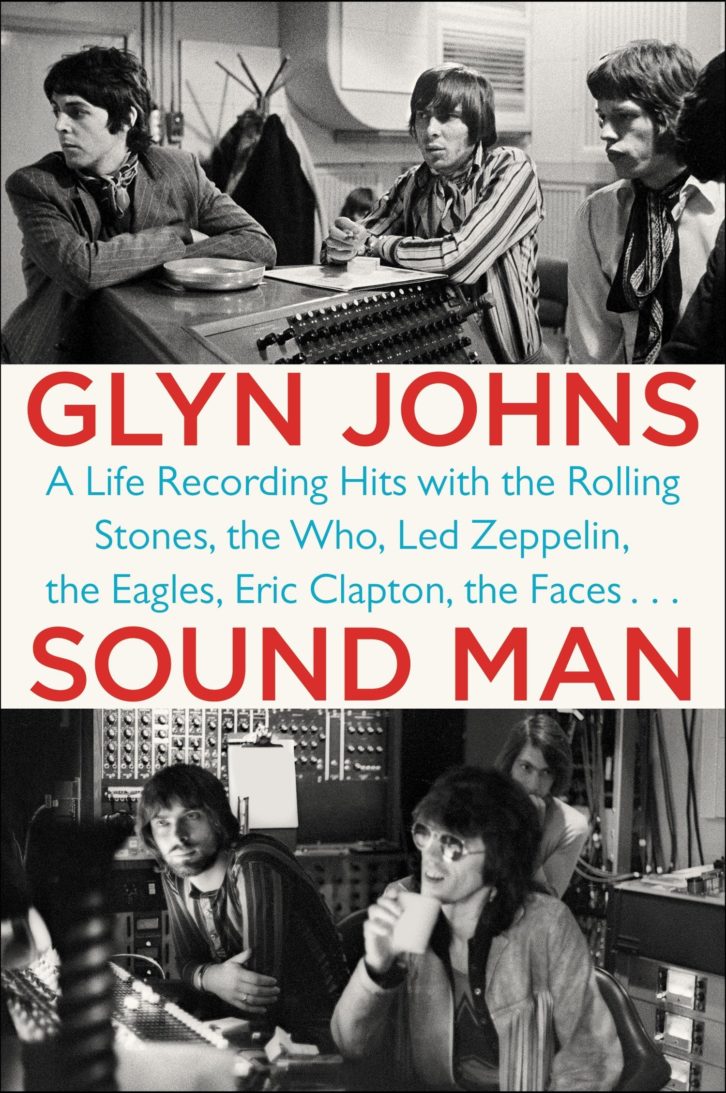
Legendary producer/engineer Glyn Johns’ autobiography Sound Man is filled with cool stories about creating classic albums with The Beatles, The Rolling Stones, Led Zeppelin, The Who, Jimi Hendrix, Bob Dylan, The Clash, Rod Stewart, Eric Clapton, The Eagles, Neil Young, The Steve Miller Band and many, many more. The tales are fun, but there’s also a lot that audio professionals can learn from Johns’ book. Here are just 10 lessons we took away from Sound Man:
• Keep An Open Mind: Time and again, Johns tells how he went to see acts with the prospect of working with them, was unimpressed and turned them down. A few of those artists had persistent managers who kept putting them in front of Johns until he finally realized what they had to offer. Invariably, they went on to record some wonderful music together—and who were those initially rejected artists? The Eagles, Joan Armatrading and Eric Clapton, for starters. If he hadn’t been able to see past his first impressions, the artists might have recorded those classic albums with other producers—or perhaps not at all.
• Keep Your Mouth Shut: While the book shares a number of wild stories—like when The Who’s drummer Keith Moon tackled two gardeners and dragged them fully clothed into Johns’ pool during a disastrous kiddie play date—you can see discretion pop up time and again. When notorious band manager Allen Klein came to the studio to bully Paul McCartney into signing with him, Johns turned off the mics in the live room to leave them to it. In another section, Johns recalls sitting outside a studio while the Beatles battled with each other inside, and writes, “It is not my place to discuss any detail of what happened, but it is common knowledge that George left the band and was persuaded to return a couple of days later.” More often than not in the book, if it didn’t specifically involve Johns, he demurs from detailing and instead moves on. Knowing how to be discreet is necessary for longevity in any career. It must have worked for Johns: McCartney himself blurbed the book on its back cover.
• Get On With It: Johns is clearly a stickler for getting things done. He quit working with The Rolling Stones multiple times because they wouldn’t focus in the studio, leaving him endlessly waiting for them to get it together. Johns had such a reputation for timekeeping that he recalls Eric Clapton once came late to a session for his seminal Slowhand album with a note from Patti Boyd stating that it was her fault the guitar slinger was tardy.
• Make Connections: Johns worked with all the great players of the Classic Rock era, so having them in his address book meant he could throw together a killer band at the drop of a hat—which he did often, whether to record artists suddenly without a band, host an impromptu jam, or set-up an all-star tour as he did with the ARMS concerts that raised money to fight Multiple Sclerosis. In fact, in the late ’60s, Bob Dylan pulled Johns aside at an airport and asked him to convince The Beatles and Stones to collaborate with him on a supergroup album. Needless to say, it never happened, but clearly Johns had become a go-to guy for connecting people. Helping musicians and industry pals find work or just something to do helped Johns win and keep a lot of friends in the business.
• Always Be Ready To Improvise: Johns recalls how he invited Steve Miller to meet the Beatles at a session for the Abbey Road album, but due to a clerical mishap, only Paul McCartney showed up to work that day. Undeterred, they fleshed out a song idea on the spot and by 5 A.M. the next day, the three had recorded “My Dark Hour” for The Steve Miller Band’s Brave New World album with Miller on vocals and guitar, and McCartney on drums, bass and harmonies. Thinking on your feet can help make the most of a bad situation.
• Give Credit Where Credit’s Due: Johns isn’t shy about spelling out his contributions, but he also owns up when something isn’t his idea. For instance, that Miller/McCartney track? Paul’s suggestion. Elsewhere, Johns sets the record straight about The Small Faces’ hit, “Itchycoo Park,” which he points out “became famous for the use of the sound of phasing on one section of the song. I have often been given credit for this, but in fact the method used to achieve it was discovered by my assistant at the time, George Chkiantz, who demonstrated it to me as I arrived for the session. I thought it was a fantastic effect and decided to use it on the track we cut that afternoon.”
• Take Some Time Out: Reading between the lines, there’s another lesson to be taken away from Sound Man, and that’s to occasionally stop and smell the roses. At one point, Johns recalls flying from London to Los Angeles to record Steve Miller, only to instead turn right around and return to England to record sessions for Abbey Road, fitting in sessions with the Stones and recording a Jimi Hendrix concert on the side before returning to the U.S. for the Miller sessions—all in the space of a few days. That’s an exciting but crazy schedule, and moments like that happen all the time in Sound Man. What you don’t hear much about in the book is Johns’ personal life, and while that’s unquestionably an author’s prerogative, given a schedule like that, you have to wonder if a personal life was even possible.
• Maintain Some Distance: After Johns produced and engineered the Eagles’ first album, the band was forced to go into the studio without him and record one last track. When Johns found out, he hit the roof, feeling the band should have been loyal to him and not recorded it. The result was “a hard lesson to learn but a good one. From that moment on, I realized that to have too close a relationship with any artist that I was to work with was almost certainly going to lead to some sort of disappointment. Quite understandably, loyalty becomes far more difficult to maintain for an artist if they believe the future of their career is threatened in any way.”
• Don’t Make Presumptions: After recording and mixing Bob Dylan’s mid-’80s concert album Real Live, as a matter of courtesy, he invited the artist along to the mastering session with Doug Sax at The Mastering Lab. It turned out that despite having made albums for more than 20 years, Dylan had never been to a mastering session before, and he relished the opportunity.
• Don’t Take Yourself Too Seriously: Johns kicks off the book explaining what a producer does: “You just have to have an opinion and the ego to express it more convincingly than anyone else.” But then he slyly adds, “Every time I start another project, I wonder if I am going to get found out.”







